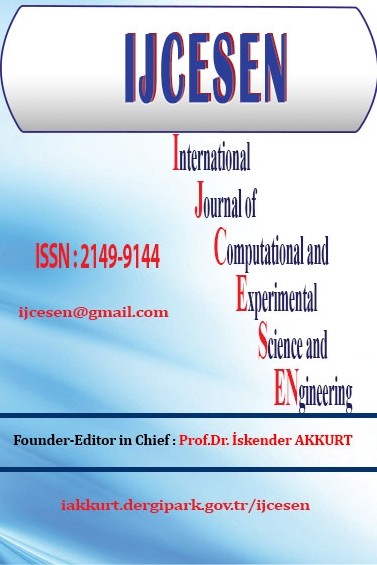Experimental Study on Fracture Conductivity in Hydraulic Fracturing
Experimental Study on Fracture Conductivity in Hydraulic Fracturing
___
- [1]. API RP 27 - RECOMMENDED PRACTICE FOR DETERMINING PERMEABILITY OF POROUS MEDIA THIRD EDITION (R 1956) (WITHDRAWN) | Engineering360. (n.d.). Retrieved June 18, 2017, from http://standards.globalspec.com/std/554507/api-rp-27[2]. API RP 61 - Recommended Practices for Evaluating Short Term Proppant Pack Conductivity | Engineering360. (n.d.). Retrieved June 18, 2017, from http://standards.globalspec.com/std/61555/api-rp-61[3]. Chao, L., Zhihong, Z., Jianchun, G., & Shengchuan, Z. (2016). Experimental study on conductivity decline with proppant embedment in tight oil reservoir. Petroleum Geology and Recovery Efficiency, 23(4), 122–126.[4]. Core Laboratories: Proppant Conductivity Evaluation System - FCS-842. (n.d.). Retrieved June 18, 2017, from http://www.corelab.com/cli/drilling-and-stimulation/proppant-conductivity-evaluation-system-fcs-842[5]. Duenckel, R., Moore, N., O’Connell, L., Abney, K., Drylie, S., & Chen, F. (2016). The Science of Proppant Conductivity Testing- Lessons Learned and Best Practices. Presented at the SPE Hydraulic Fracturing Technology Conference, Society of Petroleum Engineers. https://doi.org/10.2118/179125-MS[6]. Gidley, J. L. (1989). Recent advances in hydraulic fracturing. Retrieved from https://www.osti.gov/scitech/biblio/6558063[7]. ISO 13503-5 Procedures for measurement. (n.d.).[8]. Jian-chun, G. U. O. (2008). Experimental research on proppant embedment. Journal of China Coal Society, 33(6), 661–664.[9]. Keshavarz, A., Badalyan, A., Johnson, R., & Bedrikovetsky, P. (2016). Productivity enhancement by stimulation of natural fractures around a hydraulic fracture using micro-sized proppant placement. Journal of Natural Gas Science and Engineering, 33, 1010–1024. https://doi.org/10.1016/j.jngse.2016.03.065[10]. Kunnath Aven, N., Weaver, J., Loghry, R., & Tang, T. (2013). Long-Term Dynamic Flow Testing of Proppants and Effect of Coatings. Presented at the SPE European Formation Damage Conference & Exhibition, Society of Petroleum Engineers. https://doi.org/10.2118/165118-MS[11]. Lacy, L. L., Rickards, A. R., & Bilden, D. M. (1998). Fracture Width and Embedment Testing in Soft Reservoir Sandstone. SPE Drilling & Completion, 13(01), 25–29. https://doi.org/10.2118/36421-PA[12]. Palisch, T. T., Duenckel, R., Chapman, M. A., Woolfolk, S., & Vincent, M. (2010). How To Use and Misuse Proppant Crush Tests: Exposing the Top 10 Myths. SPE Production & Operations, 25(03), 345–354. https://doi.org/10.2118/119242-PA[13]. Shah, S. N., Vincent, M. C., Rodriquez, R. X., & Palisch, T. T. (2010). Fracture Orientation And Proppant Selection For Optimizing Production In Horizontal Wells. Presented at the SPE Oil and Gas India Conference and Exhibition, Society of Petroleum Engineers. https://doi.org/10.2118/128612-MS[14]. Szymanska, J., Wisniewski, P., Wawulska-Marek, P., Malek, M., & Mizera, J. (2016). Selecting key parameters of the green pellets and lightweight ceramic proppants for enhanced shale gas exploitation. In F. Iacoviello, L. Reis, M. Fonte, M. Freitas, & V. Infante (Eds.), Xv Portuguese Conference on Fracture, Pcf 2016 (Vol. 1, pp. 297–304). Amsterdam: Elsevier Science Bv.[15]. Vlis, V. D., C, A., Haafkens, R., Schipper, B. A., & Visser, W. (1975). Criteria For Proppant Placement and Fracture Conductivity. Presented at the Fall Meeting of the Society of Petroleum Engineers of AIME, Society of Petroleum Engineers. https://doi.org/10.2118/5637-MS[16]. Wen, Q., Zhang, S., Wang, L., Liu, Y., & Li, X. (2007). The effect of proppant embedment upon the long-term conductivity of fractures. Journal of Petroleum Science and Engineering, 55(3), 221–227. https://doi.org/10.1016/j.petrol.2006.08.010[17]. Zhang, J., Zhu, D., & Hill, A. D. (2016). Water-Induced Damage to Propped-Fracture Conductivity in Shale Formations. SPE Production & Operations, 31(02), 147–156. https://doi.org/10.2118/173346-PA
- Yayın Aralığı: 4
- Başlangıç: 2015
- Yayıncı: Prof.Dr. İskender Akkurt
Erhuvwuvoke EBOJOH, Elohor Diamond AKPOBİ
e-Migraine: Development of a comprehensive tool to estimate Migraine Comorbidity Index Score
Didem DERİCİ YILDIRIM, Bahar TAŞDELEN, Tufan MENGİ, Aynur ÖZGE, Hamit GENÇ
Fuzzy Logic Approach for Warping Problem In 3D Printing
Abdullah Burak KEŞKEKÇİ, Ramazan ŞENOL, Hilmi Cenk BAYRAKCI
Analysis of TSP: Simulated Annealing and Genetic Algorithm Approaches
Ahmet Reha BOTSALI, Kemal ALAYKIRAN
Determining the Best Maternity Hospital by Using a Fuzzy Decision Making Model
Billur ECER, Ahmet AKTAS, Mehmet KABAK, Metin DAĞDEVİREN
Experimental Study on Fracture Conductivity in Hydraulic Fracturing
Xingyuan LİANG, Fujian ZHOU, Tianbo LİANG, Jiawei ZHU, Rui WANG
Evolutionary Search Algorithm Based on Hypercube Optimization For High-Dimensional Functions
Development of Design for Enhancing Trust in Cloud’s SPI Stack
Ahmed BENTAJER, Mustapha HEDABOU, Faouzia ENNAAMA, Said ELFEZAZİ
Dependent Dummy Variable Models: An Application of Logit, Probit and Tobit Models on Survey Data
